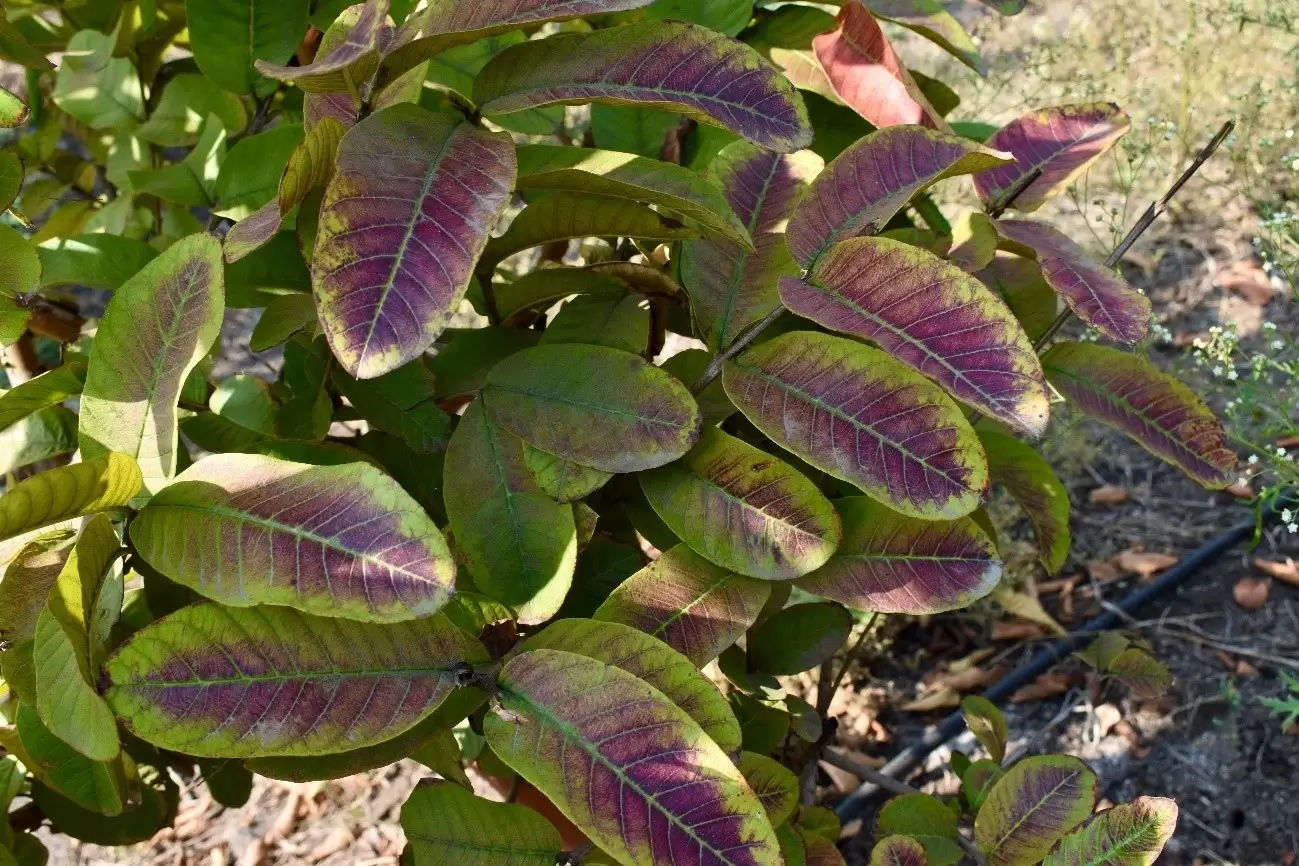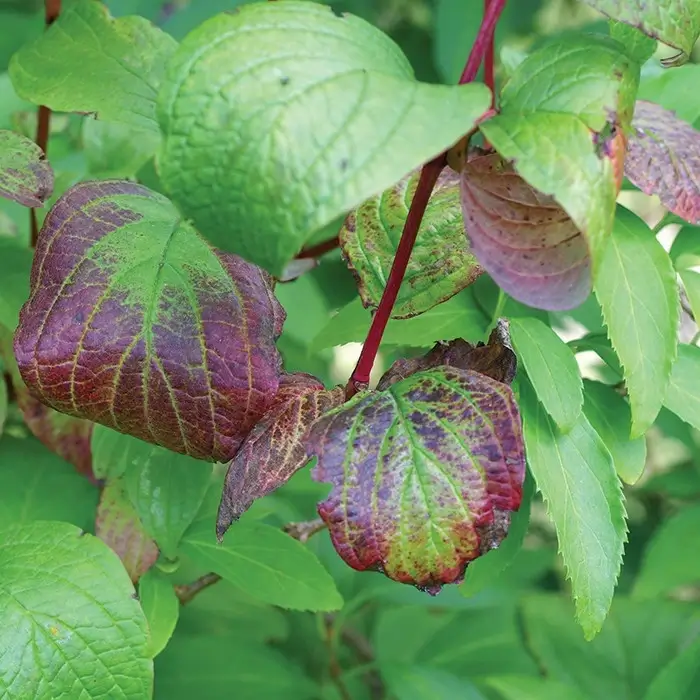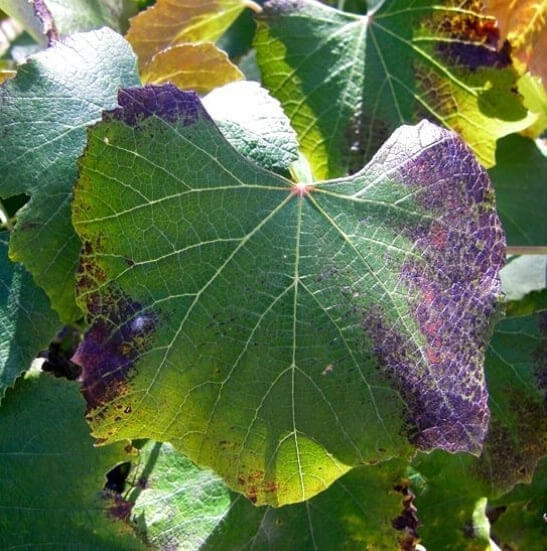
Deficiencia de Fósforo
Phosphorus Deficiency
-
Pathogen:
Nutritional disorder
Type:
Risk to the plant:
ALTO



DESCRIPTION
WHO CAUSES IT?
Phosphorus is an essential nutrient for energy transfer (ATP), photosynthesis, root development, and flower and fruit formation. Phosphorus deficiency often occurs in cold, compacted, highly acidic, or calcareous soils, where phosphorus is bound and unavailable to the plant. Phosphorus deficiency can also occur in crops with high demand (corn, wheat, legumes) if phosphate fertilizers are not provided.
SYMPTOMS
Phosphorus is relatively mobile in the plant, so symptoms usually appear on older leaves first, although overall development is also compromised.
Typical symptoms:
• Slow growth and stunted development.
• Older leaves with dull, dark green tones.
• Appearance of purple, reddish, or bluish pigmentation, especially on the undersides of leaves and stems.
• Poorly developed root system with few lateral roots.
• Delayed flowering and ripening.
• Small fruits and lower yield.
Phosphorus deficiency directly affects the plant's energy and vitality, making it weak and less able to withstand stress.
Developmental stages:
• Early: Older leaves with darker green than normal.
• Intermediate stage: Purple or reddish pigmentation on stems and veins.
• Advanced: Limited growth, short, and sparsely branched roots.
• Final: reduced flowering, poorly formed fruits and low productivity.




TEMPERATURE AND HUMIDITY
-
-

HOW IS IT SPREAD?
-

HOW TO REMOVE IT?
Home remedies
There are no home treatments
Chemical treatments
• SOLUBLE PHOSPHORUS FERTILIZERS: Monoammonium phosphate (MAP), monopotassium phosphate (MKP); rapid absorption.
• ENCAPSULATED FERTILIZERS / CONTROLLED RELEASE: Maintain availability in soils with strong phosphate fixation.
• ORGANIC FERTILIZERS + PHOSPHORUS: Enriched compost, bone meal; improve medium-term reserves.
• FERTILIZERS WITH AMINO ACIDS + PHOSPHORUS: Facilitate absorption during critical phases such as rooting and flowering.
Authorized treatments in organic farming
• SOLUBLE PHOSPHORUS FERTILIZERS: Monoammonium phosphate (MAP), monopotassium phosphate (MKP); rapid absorption.
• ENCAPSULATED FERTILIZERS / CONTROLLED RELEASE: Maintain availability in soils with strong phosphate fixation.
• ORGANIC FERTILIZERS + PHOSPHORUS: Enriched compost, bone meal; improve medium-term reserves.
• FERTILIZERS WITH AMINO ACIDS + PHOSPHORUS: Facilitate absorption during critical phases such as rooting and flowering.
Insect allies
PREDATORY MITES
LADYBUGS
LACEWINGS
PARASITIC WASPS
HOVERFLIES OR PARASITIC FLIES
PREDATORY BUGS
There are no natural allies
Mycodiplosis oidii (predatory mosquito)
EFFECTIVE PRODUCTS TO ELIMINATE THIS DISEASE
Sponsored link
Sponsored link
Sponsored link
Sponsored link
Sponsored link
Sponsored link
Sponsored link
Sponsored link
Sponsored link
Effective against all types of fungi
Sponsored link
Sponsored link
Sponsored link
Sponsored link
Sponsored link
Sponsored link
Sponsored link
To ensure sufficient phosphorus levels and promote healthy root development, flowering, and fruiting, it is important to implement practices that optimize phosphorus availability in the soil and root uptake.
• Apply phosphate fertilizers according to the crop type.
• Incorporate compost or well-rotted manure.
• Avoid very cold or compacted soils that limit absorption.
• Correct soil pH to the optimal range (approximately 6–7).
• Maintain adequate irrigation without waterlogging.
• Rotate crops to improve natural phosphorus availability.
• Control weeds that compete for nutrients.
























